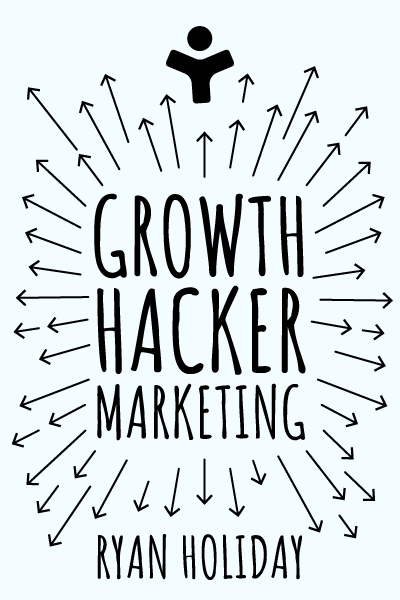
Growth Hacker Marketing: A Primer on the Future of PR, Marketing, and Advertising
by Ryan HolidayGrowth Hacker Marketing exposes the revolutionary marketing strategies that have been developed by growth hackers. It looks at how business giants like Dropbox, Twitter, Facebook, and Apple have achieved massive and rapid growth with limited resources. It is centered on the growth-hacking mindset, which entails integrating marketing directly into the product itself and continuously optimizing it for growth. By reading this book, you'll gain valuable insights into the new strategies of marketing and how to apply them to your own business so you can achieve rapid and sustained growth in today's hyper-competitive market.
Achieving Product/Market Fit
Reaching product/market fit is essential for any company to succeed. This means creating a product that resonates with the target market and generates enough demand to sustain the business. Eric Ries, the author of The Lean Startup, suggests that the best way to achieve product/market fit is by starting with a “minimum viable product” (MVP).
An MVP is the most basic version of a product that can be released to the market. Its purpose is to validate the product idea and gather feedback from early adopters. Based on this feedback, the product can be refined and improved until it meets the needs of the market.
Growth hackers are a group of marketers who focus on rapid experimentation and testing to find the most effective ways to grow a business. They believe that a product or business model should be changed until it generates a positive reaction from users.
One example of a company incorporating this strategy is Amazon, where product managers must submit a press release to their supervisor before the team starts working on the product.
This goes to show that in today's competitive market, the reward goes to companies that reach product/market fit first, not those who get to market first. It's important to focus on creating a product that solves a real problem and resonates with customers rather than rushing to launch a product that nobody wants or needs.
Actions to take
Acquiring Customers Effectively
Growth hacking is a creative approach to growing a business and its revenues. Unlike traditional marketing, which typically relies on established channels and messaging to attract customers, growth hacking starts with the premise that the business needs to validate its product or service before investing in marketing efforts.
To do this, growth hackers conduct a series of tests and experiments to determine what works best for their business, such as A/B testing, surveys, focus groups, or user testing. They analyze the data generated by these tests and use it to inform their marketing strategies, product development, and customer acquisition tactics.
One of the key elements of growth hacking is identifying cost-effective ways to acquire new customers. This often involves thinking outside of the box and finding creative and innovative ways to reach potential customers that are not being targeted by traditional marketing approaches. For example, a start-up may use influencer marketing to reach new audiences or offer free trials or incentives to encourage people to try their product.
Actions to take
Generating Virality
Virality is not something that can happen by chance. For something to go viral, it needs to have qualities that make it inherently interesting or entertaining to a specific audience, and it should be easy to share through social media or other digital platforms.
One important factor in driving virality is "publicness," which refers to the degree to which something can be shared publicly. By making content or ideas easy to share through social media or other digital channels, companies can tap into the power of social networks and leverage the network effect to drive growth.
Another strategy for driving virality is to build it into the product itself. Companies like Apple and Blackberry, for example, were able to drive virality by turning their products into an advertising engine. Basically, they used their devices to advertise by adding "Sent from my iPhone" or "Sent from my BlackBerry" to every message sent, which helped to promote their products organically.
To keep the growth engine going, it is essential to analyze available data and refine the approach until the best results are achieved. This may involve testing different strategies or experimenting with platforms to determine what works best. By continually refining the strategy, companies can ensure that their content or ideas continue to spread and generate buzz over time.
Actions to take
Retaining Customers and Optimizing Your Product
Customer retention and product optimization are two critical components that drive business growth. Eric Ries, an entrepreneur and author, emphasizes that improving customer retention is a key factor for sustainable growth. This means that we need to focus on keeping our existing customers engaged and satisfied with our product or service instead of solely trying to acquire new customers.
Market Metrics research shows that the likelihood of selling to an existing customer is much higher, at around 60-70%, compared to only 5-20% for a new prospect. This just goes to show how important it is to keep our existing customers happy and engaged.
One of the best ways to do this is to constantly improve our product or service and our overall business operations. This way, customers will never look for better alternatives to our products or services and instead remain loyal to our brand.
Actions to take
Don’t just read. Act.

